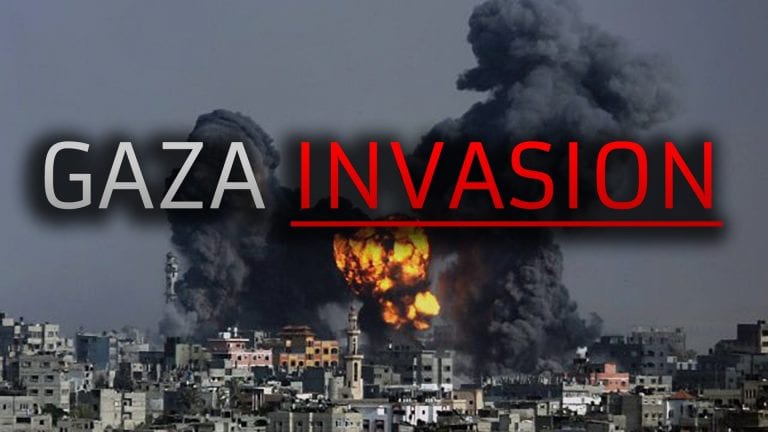Operation Cast Lead began, which was just another in a long list of military actions undertaken during the course of Israel’s six-plus decade slaughter of the Palestinian Arabs, whom it has been harassing, torturing, displacing and murdering since the end of WW2 in an effort to confiscate their land to meet the needs of the growing Jewish state.
The 22 day slaughter by the brutal Israel Defense Forces which began on December 27, 2008, incorporated the use of illegal weapons which included white phosphorous and flechettes. These barbaric weapons of mass destruction were intentionally deployed in areas heavily occupied by civilians where they burned homes and people and sliced the flesh of anyone in their path. The civilian casualties, many of whom were women and children, made up the vast majority of the nearly 2000 victims of this particular genocidal bloodbath.
In addition to subjecting the Palestinians to the more traditional weapons of war, Israel also uses them as lab rats to test weapons such as depleted uranium munitions and the “Dime bomb” which was developed by the US Air Force Research Laboratory.
As part of Israel’s PR campaign to justify its U.S. backed genocide in Gaza and divert public attention from its policy of ethnic cleansing and encroachment into Palestinian land, once again the world would be browbeaten with the Jewish holocaust of World War II, this time in the form of an old, long debunked story about yet another alleged holocaust survivor.
Norman Finkelstein effectively sums up Israel’s perverted use of the “holocaust card” to justify its persecution of the Palestinians during this brief and rather heated segment from a presentation given to students at the University of Waterloo in 2010, during which a naive Jewish girl displays her teary-eyed displeasure with Finkelstein’s remarks.
The Use of Monsanto’s White Phosphorus
The chemical manufacturing side of Monsanto goes back a long way, most notably to Vietnam where Agent Orange was used to decimate vast swaths of tropical rainforest and poison countless Vietnamese civilians and soldiers, including American. The popular 2-4, D herbicide used today was an ingredient in Agent Orange.
But Monsanto’s role as a purveyor of deadly military chemicals goes even deeper. For at least 20 years it has supplied the U.S. government with white phosphorus (WP) for incendiary weapons. What’s more, some of this white phosphorus was used in Israel’s invasion of Gaza at the end of 2008, known as Operation Cast Lead or, more appropriately, the Gaza Massacre.
Israel denied using WP at first, but admitted to using it in Gaza under media pressure. It said the WP was used as an obscurant and illuminant, but even this type of use is banned in civilian areas under the Geneva Convention. According to Sputnik News, in 2009 the U.S. State Department confirmed that WP weapons from its Arkansas plant were sent to Israel for use in the Gaza invasion.
The Monsanto connection to Israel’s war crimes and other uses of white phosphorus was exposed when Current Events Inquiry scoured documents on the US Federal Business Opportunities (FBO) website, finding that the agribusiness company provided 180,000 pounds of WP to the government for making projectiles at its Pine Bluff Arsenal in Arkansas.
The Government is aware of only one source, Monsanto, who currently manufactures WP in the US. WP requires specialized technology, skills and processes in its production. These technologies and skills must be protected within the NTIB [National Technology and Industrial Base, a term for the “persons and organizations that are engaged in research, development, production, integration, services, or information technology activities conducted within the United States and Canada”] in the event of a national emergency. […] Maintaining these skills within the NTIB is essential if the capability to produce WP is to be preserved. Without this restriction to the NTIB, there is a risk the domestic capacity to manufacture WP could be lost […] With only one known producer of WP in the NTIB (Monsanto), the Government’s support of this domestic capability is critically important as it reduces the risk to the war fighter in times of national emergency as well as avoiding a potentially dangerous dependency upon a foreign source.
Government procures the WP through a third-party contractor known as ICL Performance Products, which is a subsidiary of Israel Chemicals, Ltd. Before using white phosphorus during the Gaza Massacre, in violation of the Geneva Convention, Israel had used white phosphorus in Lebanon in 2006. The U.S. military had also used white phosphorus munitions during the battle of Fallujah in 2004.
Sputnik News goes on to describe the effects of WP when people are close enough to feel its effects, as in heavily populated civilian areas such as Gaza.
White phosphorus does not just maim, but can kill. It ignites upon contact with skin and burns either until it runs out of fuel or is cut off from oxygen. If inhaled or swallowed it can cause severe damage to any mucous membranes with which it comes in contact.
Absorption through the skin means that a 10% burn can cause damage to internal organs such as the heart, liver, or kidneys, and can be fatal. Even after healing from an initial exposure, victims can suffer from long-lasting health problems, including birth defects and neurological damage.
The making of chemicals has always been a lucrative business for Monsanto, especially when it comes to supplying the military, from Agent Orange in Vietnam to white phosphorus today. Who knows what else it makes in the interest of death and destruction?
Israel’s Operation Cast Lead
Operation “Cast Lead” was a carefully planned undertaking, which was part of a broader military-intelligence agenda first formulated by the government of Prime Minister Ariel Sharon in 2001:
“Sources in the defense establishment said Defense Minister Ehud Barak instructed the Israel Defense Forces to prepare for the operation over six months (previous), even as Israel was beginning to negotiate a ceasefire agreement with Hamas.”(Barak Ravid, Operation “Cast Lead”: Israeli Air Force strike followed months of planning, Haaretz, December 27, 2008)
It was Israel which broke the truce on the day of the US presidential elections, November 4:
“Israel used this distraction to break the ceasefire between itself and Hamas by bombing the Gaza strip. Israel claimed this violation of the ceasefire was to prevent Hamas from digging tunnels into Israeli territory.
The very next day, Israel launched a terrorizing siege of Gaza, cutting off food, fuel, medical supplies and other necessities in an attempt to “subdue” the Palestinians while at the same time engaging in armed incursions.
In response, Hamas and others in Gaza again resorted to firing crude, homemade, and mainly inaccurate rockets into Israel. During the (prior) seven years, these rockets were responsible for the deaths of 17 Israelis. Over the same time span, Israeli Blitzkrieg assaults killed thousands of Palestinians, drawing worldwide protest but falling on deaf ears at the UN.” (Shamus Cooke, The Massacre in Palestine and the Threat of a Wider War, Global Research, December 2008)
Planned Humanitarian Disaster
On December 8, US Deputy Secretary of State John Negroponte was in Tel Aviv for discussions with his Israeli counterparts including the director of Mossad, Meir Dagan.
“Operation Cast Lead” was initiated two days after Christmas. It was coupled with a carefully designed international Public Relations campaign under the auspices of Israel’s Foreign Ministry.
Hamas’ military targets are not the main objective. Operation “Cast Lead” is intended, quite deliberately, to trigger civilian casualities.
What we are dealing with is a “planned humanitarian disaster” in Gaza in a densly populated urban area. (See map below)
The longer term objective of this plan, as formulated by Israeli policy makers, is the expulsion of Palestinians from Palestinian lands:
“Terrorize the civilian population, assuring maximal destruction of property and cultural resources… The daily life of the Palestinians must be rendered unbearable: They should be locked up in cities and towns, prevented from exercising normal economic life, cut off from workplaces, schools and hospitals, This will encourage emigration and weaken the resistance to future expulsions” Ur Shlonsky, quoted by Ghali Hassan, Gaza: The World’s Largest Prison, Global Research, 2005)
“Operation Justified Vengeance”
A turning point was reached. Operation “Cast Lead” was part of the broader military-intelligence operation initiated at the outset of the Ariel Sharon government in 2001. It was under Sharon’s “Operation Justified Vengeance” that F-16 fighter planes were initially used to bomb Palestinian cities.
“Operation Justified Vengeance” was presented in July 2001 to the Israeli government of Ariel Sharon by IDF chief of staff Shaul Mofaz, under the title “The Destruction of the Palestinian Authority and Disarmament of All Armed Forces”.
“A contingency plan, codenamed Operation Justified Vengeance, was drawn up last June [2001] to reoccupy all of the West Bank and possibly the Gaza Strip at a likely cost of “hundreds” of Israeli casualties.” (Washington Times, 19 March 2002).
According to Jane’s ‘Foreign Report’ (July 12, 2001) the Israeli army under Sharon had updated its plans for an “all-out assault to smash the Palestinian authority, force out leader Yasser Arafat and kill or detain its army”.
“Bloodshed Justification”
The “Bloodshed Justification” was an essential component of the military-intelligence agenda. The killing of Palestinian civilians was justified on “humanitarian grounds.” Israeli military operations were carefully timed to coincide with the suicide attacks:
The assault would be launched, at the government’s discretion, after a big suicide bomb attack in Israel, causing widespread deaths and injuries, citing the bloodshed as justification. (Tanya Reinhart, Evil Unleashed, Israel’s move to destroy the Palestinian Authority is a calculated plan, long in the making, Global Research, December 2001, emphasis added)
The Dagan Plan
“Operation Justified Vengeance” was also referred to as the “Dagan Plan”, named after General (ret.) Meir Dagan, who currently heads Mossad, Israel’s intelligence agency.
Reserve General Meir Dagan was Sharon’s national security adviser during the 2000 election campaign. The plan was apparently drawn up prior to Sharon’s election as Prime Minister in February 2001. “According to Alex Fishman writing in Yediot Aharonot, the Dagan Plan consisted in destroying the Palestinian authority and putting Yasser Arafat ‘out of the game’.” (Ellis Shulman, “Operation Justified Vengeance”: a Secret Plan to Destroy the Palestinian Authority, March 2001):
“As reported in the Foreign Report [Jane] and disclosed locally by Maariv, Israel’s invasion plan — reportedly dubbed Justified Vengeance — would be launched immediately following the next high-casualty suicide bombing, would last about a month and is expected to result in the death of hundreds of Israelis and thousands of Palestinians. (Ibid, emphasis added)
The “Dagan Plan” envisaged the so-called “cantonization” of the Palestinian territories whereby the West Bank and Gaza would be totally cut off from one other, with separate “governments” in each of the territories. Under this scenario, already envisaged in 2001, Israel would:
”negotiate separately with Palestinian forces that are dominant in each territory-Palestinian forces responsible for security, intelligence, and even for the Tanzim (Fatah).” The plan thus closely resembles the idea of “cantonization” of Palestinian territories, put forth by a number of ministers.” Sylvain Cypel, The infamous ‘Dagan Plan’ Sharon’s plan for getting rid of Arafat, Le Monde, December 17, 2001)
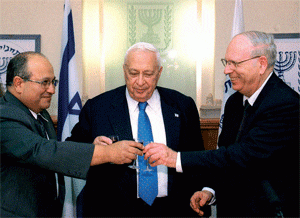
The Dagan Plan has established continuity in the military-intelligence agenda. In the wake of the 2000 elections, Meir Dagan was assigned a key role. “He became Sharon’s “go-between” in security issues with President’s Bush’s special envoys Zinni and Mitchell.” He was subsequently appointed Director of the Mossad by Prime Minister Ariel Sharon in August 2002. In the post-Sharon period, he remained head of Mossad. He was reconfirmed in his position as Director of Israeli Intelligence by Prime Minister Ehud Olmert in June 2008.
Meir Dagan, in coordination with his US counterparts, has been in charge of various military-intelligence operations. It is worth noting that Meir Dagan as a young Colonel had worked closely with defense minister Ariel Sharon in the raids on Palestinian settlements in Beirut in 1982. The 2009 ground invasion of Gaza, in many regards, bear a canny resemblance to the 1982 military operation led by Sharon and Dagan.
Continuity: From Sharon to Olmert

It is important to focus on a number of key events which have led up to the killings in Gaza under “Operation Cast Lead”:
1. The assassination in November 2004 of Yaser Arafat. This assassination had been on the drawing board since 1996 under “Operation Fields of Thorns”. According to an October 2000 document “prepared by the security services, at the request of then Prime Minister Ehud Barak, stated that ‘Arafat, the person, is a severe threat to the security of the state [of Israel] and the damage which will result from his disappearance is less than the damage caused by his existence’”. (Tanya Reinhart, Evil Unleashed, Israel’s move to destroy the Palestinian Authority is a calculated plan, long in the making, Global Research, December 2001. Details of the document were published in Ma’ariv, July 6, 2001.).
Arafat’s assassination was ordered in 2003 by the Israeli cabinet. It was approved by the US which vetoed a United Nations Security Resolution condemning the 2003 Israeli Cabinet decision. Reacting to increased Palestinian attacks, in August 2003, Israeli Defense Minister Shaul Mofaz declared “all out war” on the militants whom he vowed “marked for death.”
“In mid September, Israel’s government passed a law to get rid of Arafat. Israel’s cabinet for political security affairs declared it “a decision to remove Arafat as an obstacle to peace.” Mofaz threatened; “we will choose the right way and the right time to kill Arafat.” Palestinian Minister Saeb Erekat told CNN he thought Arafat was the next target. CNN asked Sharon spokesman Ra’anan Gissan if the vote meant expulsion of Arafat. Gissan clarified; “It doesn’t mean that. The Cabinet has today resolved to remove this obstacle. The time, the method, the ways by which this will take place will be decided separately, and the security services will monitor the situation and make the recommendation about proper action.” (See Trish Shuh, Road Map for a Decease Plan, www.mehrnews.com November 9 2005)

The assassination of Arafat was part of the 2001 Dagan Plan. In all likelihood, it was carried out by Israeli Intelligence. It was intended to destroy the Palestinian Authority, foment divisions within Fatah as well as between Fatah and Hamas. Mahmoud Abbas is a Palestinian quisling. He was installed as leader of Fatah, with the approval of Israel and the US, which finance the Palestinian Authority’s paramilitary and security forces.
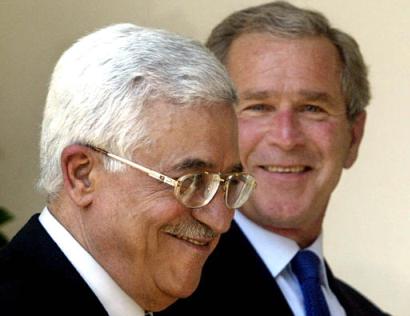
2. The removal, under the orders of Prime Minister Ariel Sharon in 2005, of all Jewish settlements in Gaza. A Jewish population of over 7,000 was relocated.
“It is my intention [Sharon] to carry out an evacuation – sorry, a relocation – of settlements that cause us problems and of places that we will not hold onto anyway in a final settlement, like the Gaza settlements…. I am working on the assumption that in the future there will be no Jews in Gaza,” Sharon said.” (CBC, March 2004)
The issue of the settlements in Gaza was presented as part of Washington’s “road map to peace”. Celebrated by the Palestinians as a “victory”, this measure was not directed against the Jewish settlers. Quite the opposite: It was part of the overall covert operation, which consisted in transforming Gaza into a concentration camp. As long as Jewish settlers were living inside Gaza, the objective of sustaining a large barricaded prison territory could not be achieved. The Implementation of “Operation Cast Lead” required “no Jews in Gaza”.
3. The building of the infamous Apartheid Wall was decided upon at the beginning of the Sharon government. (See Map below).
4. The next phase was the Hamas election victory in January 2006. Without Arafat, the Israeli military-intelligence architects knew that Fatah under Mahmoud Abbas would loose the elections. This was part of the scenario, which had been envisaged and analyzed well in advance.
With Hamas in charge of the Palestinian authority, using the pretext that Hamas is a terrorist organization, Israel would carry out the process of “cantonization” as formulated under the Dagan plan. Fatah under Mahmoud Abbas would remain formally in charge of the West Bank. The duly elected Hamas government would be confined to the Gaza strip.
Ground Attack
On January 3, Israeli tanks and infantry entered Gaza in an all out ground offensive:
“The ground operation was preceded by several hours of heavy artillery fire after dark, igniting targets in flames that burst into the night sky. Machine gun fire rattled as bright tracer rounds flashed through the darkness and the crash of hundreds of shells sent up streaks of fire. (AP, January 3, 2009)
Israeli sources have pointed to a lengthy drawn out military operation. It “won’t be easy and it won’t be short,” said Defense Minister Ehud Barak in a TV address.
Israel is not seeking to oblige Hamas “to cooperate”. What we are dealing with is the implementation of the “Dagan Plan” as initially formulated in 2001, which called for:
“an invasion of Palestinian-controlled territory by some 30,000 Israeli soldiers, with the clearly defined mission of destroying the infrastructure of the Palestinian leadership and collecting weaponry currently possessed by the various Palestinian forces, and expelling or killing its military leadership. (Ellis Shulman, op cit, emphasis added)
The broader question is whether Israel in consultation with Washington is intent upon triggering a wider war.
Mass expulsion could occur at some later stage of the ground invasion, were the Israelis to open up Gaza’s borders to allow for an exodus of population. Expulsion was referred to by Ariel Sharon as the “a 1948 style solution”. For Sharon “it is only necessary to find another state for the Palestinians. -’Jordan is Palestine’ – was the phrase that Sharon coined.” (Tanya Reinhart, op cit)
Recommended Books:
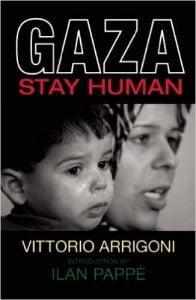 “It is first and foremost an eyewitness account of an everyman and a true humanist. He was there during the Operation ‘Cast Lead’ and so his daily dispatches came directly from the killing fields of Gaza, and are therefore free of any media distortion or manipulation.”—Ilan Pappé, professor of history, University of Exeter
“It is first and foremost an eyewitness account of an everyman and a true humanist. He was there during the Operation ‘Cast Lead’ and so his daily dispatches came directly from the killing fields of Gaza, and are therefore free of any media distortion or manipulation.”—Ilan Pappé, professor of history, University of Exeter
An authoritative and deeply moving eyewitness account of the terrible twenty-two-day Israeli offensive against the Gaza Strip in December 2008 and January 2009. These daily dispatches were written in precarious conditions, between bombing raids and intermittent Internet access. Vittorio Arrigoni ends his dispatches with the plea “stay human,” which became the motto of the peace protests in his native Italy. This English translation is updated with new entries reflecting on life in Gaza after the offensive and also features an introduction by famous Israeli historian Ilan Pappé.
Vittorio Arrigoni was an internationally renowned human rights activist who served as a volunteer with the pacifist International Solidarity Movement and worked closely with fishermen and farmers in Gaza. During the Israeli offensive against the Gaza Strip in 2008-9, Arrigoni acted as a human shield while working with the Palestinian Red Crescent ambulances. Working as a freelance journalist for the Italian daily Il Manifesto, Arrigoni’s daily dispatches, written between bombing raids and patchy internet access, ended with the plea, “stay human,” which became the motto of the anti-Israeli peace protests in his native Italy. His authoritative and deeply moving eyewitness account was later published in 2010 in Italian, French, German, and English, which the historian Ilan Pappé described as the “account of an everyman and a true humanist.” On April 14, 2011, Arrigoni was kidnapped and brutally murdered by militants in Gaza, which caused an international outcry and was unanimously condemned by Hamas and the Palestinian National Authority.
 Israel’s Operation Cast Lead thrust the humanitarian crisis in the Gaza Strip into the center of the debate about the Israel/Palestine conflict. In this updated and expanded edition, Noam Chomsky and Ilan Pappé survey the fallout from Israel’s conduct in Gaza, including their latest incursions, and place it in historical context.
Israel’s Operation Cast Lead thrust the humanitarian crisis in the Gaza Strip into the center of the debate about the Israel/Palestine conflict. In this updated and expanded edition, Noam Chomsky and Ilan Pappé survey the fallout from Israel’s conduct in Gaza, including their latest incursions, and place it in historical context.
Noam Chomsky is widely regarded to be one of the foremost critics of US foreign policy in the world. He has published numerous groundbreaking books, articles, and essays on global politics, history, and linguistics. Since 2003 he has written a monthly column for the New York Times syndicate. His recent books include Masters of Mankind and Hopes and Prospects. Haymarket Books recently released updated editions of twelve of his classic books.
Ilan Pappé is the bestselling author of The Ethnic Cleansing of Palestine: A History of Modern Palestine and The Israel/Palestine Question.
Frank Barat is a human rights activist and author. He was the coordinator of the Russell Tribunal on Palestine and is now the president of the Palestine Legal Action Network. His books include Freedom is a Constant Struggle, Gaza in Crisis, Corporate Complicity in Israel’s Occupation, and On Palestine.
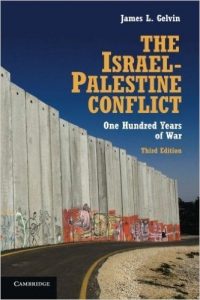 Now entering its third edition, James L. Gelvin’s award-winning account of the conflict between Israelis and their forebears, on the one hand, and Palestinians and theirs, on the other, offers a compelling, accessible, and current introduction for students and general readers. Newly updated to take into account the effects of the 2010-11 Arab uprisings on the conflict and the recognition of Palestinian statehood by the United Nations, the book traces the struggle from the emergence of nationalism among the Jews of Europe and the Arab inhabitants of Ottoman Palestine through the present, exploring the external pressures and internal logic that have propelled it. Placing events in Palestine within the framework of global history, The Israel-Palestine Conflict: One Hundred Years of War skillfully interweaves biographical sketches, eyewitness accounts, poetry, fiction, and official documentation into its narrative.
Now entering its third edition, James L. Gelvin’s award-winning account of the conflict between Israelis and their forebears, on the one hand, and Palestinians and theirs, on the other, offers a compelling, accessible, and current introduction for students and general readers. Newly updated to take into account the effects of the 2010-11 Arab uprisings on the conflict and the recognition of Palestinian statehood by the United Nations, the book traces the struggle from the emergence of nationalism among the Jews of Europe and the Arab inhabitants of Ottoman Palestine through the present, exploring the external pressures and internal logic that have propelled it. Placing events in Palestine within the framework of global history, The Israel-Palestine Conflict: One Hundred Years of War skillfully interweaves biographical sketches, eyewitness accounts, poetry, fiction, and official documentation into its narrative.

